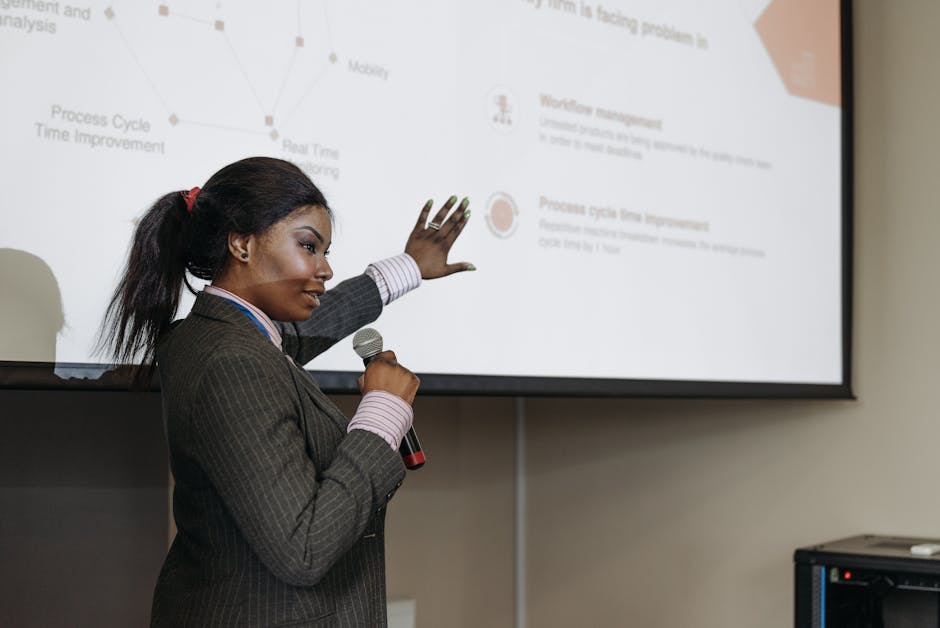Introduction
In a world where online presence is key, owning a website is just half of the battle. The real challenge lies in making your website a high-performing, lead-generating powerhouse. This is where conversion optimization strategies come into play. If you’re a small business owner overwhelmed by the convoluted world of internet marketing, finding the right strategies to optimize your website for conversion can be daunting. But fret not. This guide on ‘Effective Conversion Optimization Strategies for Your Website’ is designed to help you navigate the landscape, understand crucial elements of conversion rate optimization (CRO), and apply effective strategies that will turn your website into a magnet for quality leads and loyal customers.
What is Conversion Rate Optimization?
Let’s start by unraveling the mystery of Conversion Rate Optimization. In the simplest terms, Conversion Rate Optimization (CRO) is a strategy focused on increasing the percentage of your website visitors who complete a desired action. This could be anything from filling out a form, signing up for a newsletter, or making a purchase. In essence, it’s about turning website traffic into tangible business results.
Why is Conversion Rate Optimization Important?
Why should you care about CRO? The answer is simple: it’s all about efficiency and growth. Instead of constantly battling for new traffic, CRO allows you to squeeze more value from your existing audience. By optimizing your website for conversions, you can generate more leads and sales without having to increase your traffic. This results in a more sustainable growth model for your business as it lowers acquisition costs and increases revenue.
How to Calculate Conversion Rate
Calculating your website’s conversion rate is a straightforward process. You simply divide the number of conversions your site has had over a certain period by the number of unique visitors during that same period. Multiply the result by 100, and you have your conversion rate as a percentage.
For example, if your website had 500 visitors last month and 50 of them made a purchase, your conversion rate would be 10%. This means 10% of your website visitors became customers.
What is Considered a Good Conversion Rate?
So, what is a ‘good’ conversion rate? The truth is, it’s relative. It depends on various factors such as your industry, your specific business goals, and your audience demographics. For instance, in the second quarter of 2022, the average conversion rate for e-commerce websites in the United States was 2.3%. However, in Great Britain, it rose to over 4%.
While these figures offer a benchmark, it’s essential to focus on your unique situation. If your conversion rate is lower than your set goals or industry average, then it’s time to roll up your sleeves and dive into CRO. With the right strategies and a bit of patience, you can turn your website into a powerful tool for business growth. So, let’s dive deeper into how you can optimize your conversion rate.

Key Components of Successful Conversion Rate Optimization
Conversion rate optimization (CRO) is not a one-size-fits-all affair. It’s a multifaceted process that involves various components, each playing a crucial role in the overall outcome. The key to a successful CRO strategy lies in a thorough understanding and effective implementation of these components. Let’s take a closer look.
Audience Research
Knowing your audience is the first significant step towards successful CRO. It involves studying your customers’ behavior, their needs, and their interaction with your brand. This can be achieved through surveys, interviews, and analysis of past customer behavior data. The insights gathered will help you tailor your website to better match your audience’s expectations, thus improving conversions.
Design
The design of your website plays a crucial role in CRO. A well-designed, aesthetically pleasing website with easy navigation can significantly enhance user experience, thereby increasing the chances of conversion. It’s essential to work with a professional web designer who understands the principles of CRO. The design should be responsive and accessible, ensuring that visitors can easily find what they need.
Site Speed
Site speed is an integral part of both SEO and CRO. The longer it takes for your website to load, the higher the chances users will abandon it. Ideally, your website should load in under three seconds on all devices. You can achieve this by reducing image file sizes, removing slow-loading elements, and optimizing your site’s code. A fast-loading website can significantly increase conversions.
Copy
The copy on your website should be compelling and resonate with your audience. It should clearly communicate your value proposition and guide users to take the desired action. Use persuasive language, power words, and clear, concise sentences. Make sure your copy is easy to understand and provides all the information needed to make a decision.
Call-To-Action
Your call-to-action (CTA) buttons are your final nudge towards conversion. They should be compelling, clear, and easy to spot. Experiment with different colors, sizes, and copy to find what works best for your audience.
Navigation
A website that’s easy to navigate enhances user experience, leading to better engagement and higher conversion rates. Make sure your website structure is intuitive, and your navigation menu is simple and straightforward. Users should be able to find what they’re looking for within a few clicks.
Forms
Forms are often the final step in the conversion process. They should be simple, easy to fill out, and ask for only the necessary information. Long and complicated forms can deter users and lead to abandoned conversions.
By understanding and implementing these key components, you can create a robust and effective CRO strategy that drives conversions and boosts your business growth. Remember, the goal of CRO is not just to increase conversions but to provide a better user experience that keeps your customers coming back.

Effective Conversion Optimization Strategies
Creating a high-converting website involves more than just having an aesthetically pleasing design. It requires a strategic approach to lead your visitors through a smooth journey from discovery to conversion. Here are some effective conversion optimization strategies that can help enhance your website’s performance and boost your conversion rates.
Simplify the User Experience
The first step to optimize conversions is to simplify the user experience. A clean, uncluttered layout with clear navigation can help visitors find what they’re looking for easily, thereby increasing the chances of conversion.
Use High-Quality Product Images
Visuals play a crucial role in decision-making. High-quality product images can provide visitors with a better understanding of your offerings, making them more likely to convert.
Showcase Your Product Reviews
Reviews and testimonials provide social proof, which can significantly improve conversions. Featuring positive reviews on your site can help build credibility and trust with your visitors.
Use Heat Maps for Better Understanding of User Behavior
Heat maps are a powerful tool for understanding user behavior on your site. They can reveal how visitors interact with your site, helping you identify areas that are working well and those that need improvement.
Pre-fill Your Customer’s Information
If you have returning customers, pre-filling their information can make the checkout process smoother and faster, thereby reducing cart abandonment and improving conversions.
Send Abandoned Cart Emails
Abandoned cart emails serve as a reminder to customers who left items in their cart without completing the purchase. These emails can significantly boost your conversion rates by bringing back those customers.
Make Sure Your Site is Mobile Responsive
With the majority of people accessing the internet via mobile devices, having a mobile-responsive site is no longer optional. A site that is not mobile-friendly can lead to frustrated visitors and lost conversions.
Optimize Your Website’s Loading Times
Slow-loading websites can lead to high bounce rates. By optimizing your site’s loading times, you can provide a better user experience and increase conversions.
Use Videos to Promote Your Products
Videos are a highly engaging medium that can effectively showcase your products or services. A well-crafted product video can significantly boost conversions by providing a more comprehensive understanding of your offerings.
Convince People Through Social Proof
Social proof, such as testimonials, reviews, and case studies, can significantly influence a visitor’s decision to convert. Showcasing social proof on your site can enhance credibility and drive conversions.
Retarget Your Visitors to Re-Engage Them
Retargeting allows you to re-engage visitors who left your site without converting. By showing them personalized ads based on their browsing behavior, you can bring them back to your site and increase the chances of conversion.
Use Live Chat to Talk With Your Customers
Live chat provides instant support to your visitors, answering their queries in real-time. This immediate response can enhance the user experience and lead to higher conversions.
Give Discounts and Offers to Entice Your Visitors
Discounts and special offers can serve as a strong incentive for visitors to convert. By strategically placing these offers on your site, you can drive conversions and increase sales.
Reduce On-Page Distractions
Too many distractions on a page can lead to a decrease in conversions. By minimizing distractions, you can create a focused user experience that drives conversions.
Run A/B Tests on Your Landing Pages
A/B testing is a proven method to improve conversions. By testing different elements on your landing pages, you can identify what works best and optimize accordingly.
Implementing these strategies can significantly enhance your site’s conversion rate, leading to higher sales and business growth. Remember, it’s important to continually test and optimize your strategies to achieve the best results. This guide provides further insights on how to improve your website to boost conversions.
Measuring the Success of Your Conversion Rate Optimization Strategies
You’ve implemented some strategic changes to optimize your website for conversions, but how can you tell if they’re working? It’s time to take a closer look at measuring the success of your conversion rate optimization (CRO) strategies. Let’s dive into how to measure your conversion rate and the key metrics and KPIs you should be tracking.
How to Measure Conversion Rate
To accurately gauge the impact of your CRO efforts, you need to know how to measure your conversion rate. Simply put, your conversion rate is the percentage of website visitors who complete a desired action, such as making a purchase or filling out a form.
To calculate your conversion rate, follow these steps:
- Identify the number of conversions: This is the number of times a visitor took the desired action on your site.
- Identify the total number of visitors: This is the total number of unique visitors your site received during the same period.
- Divide the number of conversions by the total number of visitors.
- Multiply the result by 100 to express your conversion rate as a percentage.
For instance, if you had 1,000 visitors to your site and 50 of them made a purchase, then your conversion rate would be 5%.
Key Conversion Rate Optimization Metrics and KPIs to Track
Along with the conversion rate, there are other key metrics and KPIs that can help assess the effectiveness of your CRO strategies. These include:
- Bounce Rate: The percentage of visitors who leave your site after viewing only one page. A high bounce rate may indicate that users aren’t finding what they need or expect on your site.
- Exit Rate: The percentage of users who leave your site from a specific page. This can help identify pages that might be causing users to leave.
- Average Time on Page: The average amount of time users spend on a specific page. Longer times can indicate that users are engaging with your content.
- Page Views: The total number of times a specific page is viewed. More views can indicate higher interest in that page’s content.
- Click-Through Rate (CTR): The percentage of users who click on a specific link. A high CTR can indicate effective calls to action and compelling content.
By understanding and tracking these key metrics, you can gain valuable insights into how users interact with your site, which can guide your ongoing CRO efforts.
Remember, CRO is an iterative process. Consistently measuring and analyzing your performance data will allow you to pinpoint what’s working and where improvements can be made, leading to a stronger, more effective website.
The Role of Web Design in Conversion Rate Optimization
Website design is more than just aesthetic appeal. It plays a pivotal role in the success of your conversion rate optimization strategy. From the layout to navigation, the design of your website influences the user experience, and in turn, your conversion rates.
How Randy Speckman Design Can Help Improve Your Conversion Rate
Imagine a website that doesn’t just look good, but also functions as a powerful lead generation tool. This is where Randy Speckman Design steps in. They specialize in crafting high-performing websites that not only appeal visually but also aid in your business growth by optimizing conversion rates.
One key aspect they focus on is the design of your landing pages. These are often a visitor’s first impression of your website and can significantly influence their decision to take action. Randy Speckman Design optimizes your landing pages for an improved user experience, increasing the likelihood of converting visitors into customers ^1^.
Another crucial component of CRO that Randy Speckman Design tackles is your Call-to-Action (CTA) buttons. These buttons are the primary drivers of conversions on your website. By making them clear, visible, and compelling, Randy Speckman Design encourages visitors to take action, thereby boosting your conversion rate.
If you’re selling a product or service, the checkout process is a critical part of your website. Randy Speckman Design ensures a smooth and seamless checkout process, leading to more completed transactions and a higher conversion rate ^2^.
Moreover, if you’re offering a product or a service, your product/service pages are key to converting visitors into customers. Randy Speckman Design helps build trust and credibility with your visitors by providing clear and detailed information on these pages, thus increasing the chances of conversion.
In the end, every website is unique, and it’s essential to test and experiment with different elements to see what works best for you. With Randy Speckman Design’s expertise, you can efficiently optimize your website for conversions, leading to increased revenue and business growth.
Remember, a well-designed website doesn’t just attract visitors, it converts them into loyal customers. Let Randy Speckman Design help you achieve that.
Conclusion
The path to a high-converting website is paved with strategic planning, data analysis, and continuous optimization. As a small business owner, your goal is not just to draw visitors to your site but to convert them into loyal customers. This means implementing conversion optimization strategies that simplify the user experience, leverage high-quality product images, showcase customer testimonials, and engage prospects through compelling videos and social proof.
Don’t forget the power of retargeting to re-engage visitors and the convenience of live chat to address customer inquiries promptly. Offering discounts and minimizing on-page distractions are also proven strategies to entice visitors and boost conversions.
But remember, every business is unique. What works for one may not work for another. That’s where testing comes into play. Run A/B tests on your landing pages, track your key performance indicators, and continuously iterate your strategies based on what the data tells you.
The success of your conversion optimization strategies relies heavily on your website’s design. A well-crafted site that resonates with your audience can significantly improve your conversion rates. That’s why it’s crucial to work with a web design company that not only understands the aesthetics of design but also appreciates the nuances of marketing and conversion optimization.
In conclusion, conversion optimization is not a one-and-done task. It’s a continuous process that requires diligence, creativity, and a keen eye for detail. It’s about creating a seamless, engaging, and rewarding experience for your visitors, leading them down the path to becoming loyal customers. So keep experimenting, keep testing, keep improving. The journey may be challenging, but the results are worth it!
So make the most of your website. Let it be more than just a digital storefront; let it be a powerful tool that drives your business growth. After all, in the digital age, your website is not just part of your business; it is your business. And with the right strategies, you can make it a high-converting powerhouse that fuels your success for years to come.
Ready to take your website to the next level? Don’t just dream about it, make it happen. The world of internet marketing may be overwhelming, but with the right strategies and the right partner, you can turn your website into your most powerful asset. Start optimizing your website for conversions today, and watch your business grow beyond your wildest dreams.




